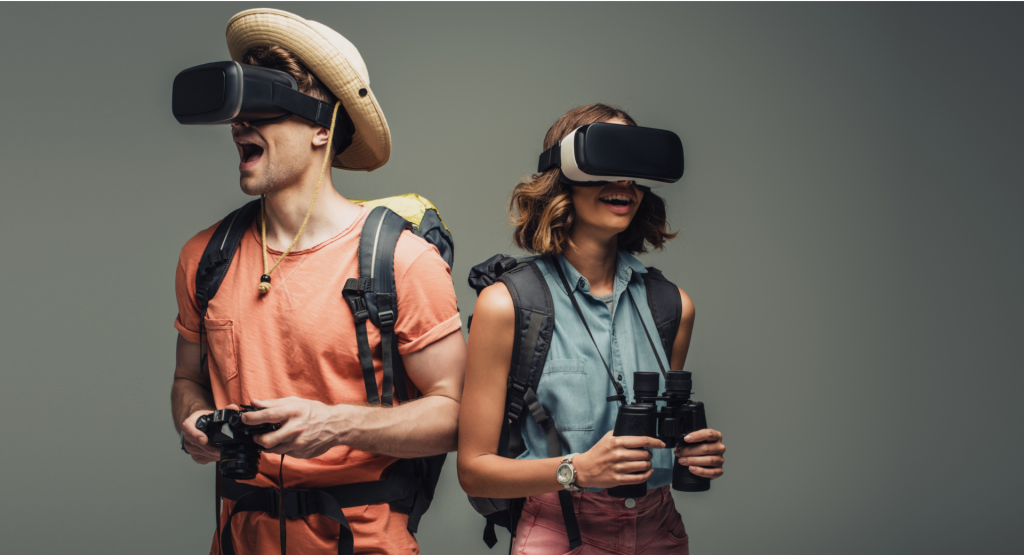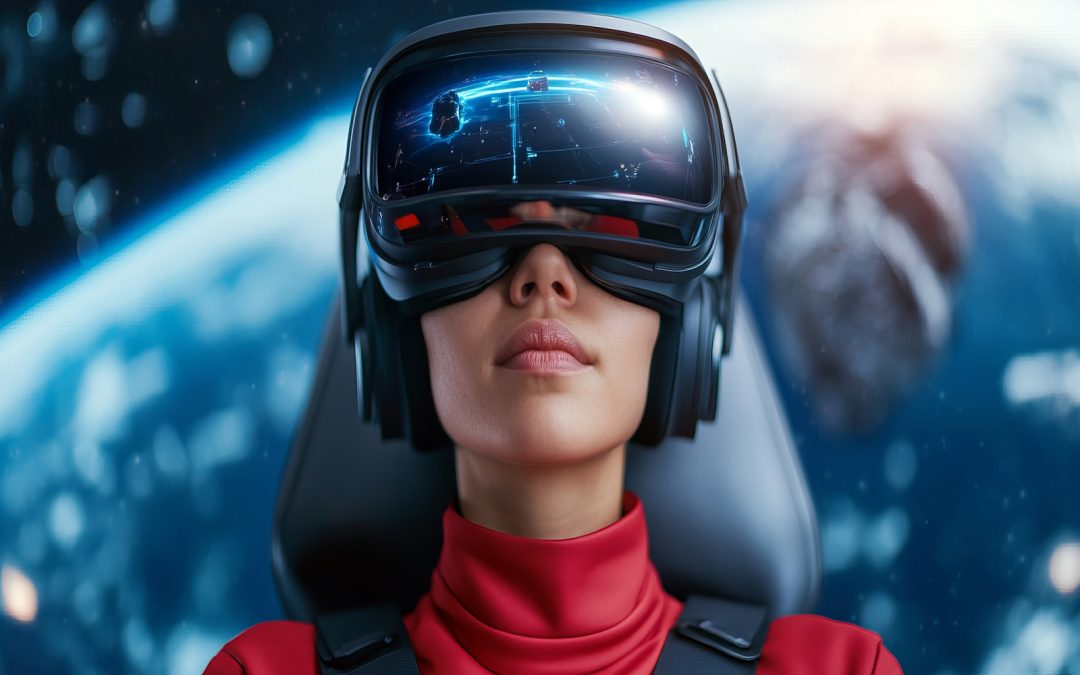Virtual Reality (VR) is revolutionizing the way we explore the world, offering immersive experiences that transcend physical limitations. Whether it’s taking a virtual stroll through Paris, diving deep into the ocean, or climbing the peaks of Mount Everest, VR travel experiences are redefining how we interact with destinations. This article will explore how VR is making waves in the travel industry, enhancing accessibility, and opening up new possibilities for adventure.
How VR is Changing the Travel Landscape
Virtual City Tours: Exploring Destinations from Your Living Room
Virtual city tours are one of the most popular and practical applications of VR in travel. These experiences allow users to explore global destinations with a simple headset. Through VR, you can visit cities like Tokyo, Rome, or New York, exploring landmarks, streets, and even local markets in a highly immersive way.
Key Benefits of Virtual City Tours:
- Cost-effective: Virtual travel eliminates the need for expensive flights or accommodations.
- Cultural Exposure: Users can gain exposure to new cultures without leaving their homes.
- Interactive: VR tours often include interactive elements, like guides who provide historical facts or insights about landmarks.
For example, platforms like Google Earth VR allow users to “fly” around the globe and visit famous locations as if they were there in person.
VR Adventure Simulations: Experience the Thrill Without the Risk
For those who crave adventure, VR provides a safe and exhilarating way to experience extreme activities. With VR, users can partake in skydiving, scuba diving, bungee jumping, or even climbing Everest, all from the safety of their home.
Popular Adventure Simulations in VR:
- Virtual Skydiving: Experience the adrenaline rush of freefalling from a plane.
- Underwater Exploration: Dive deep into coral reefs or explore shipwrecks without getting wet.
- Mountain Climbing: Scale the heights of the world’s tallest peaks, all from your living room.
VR experiences such as those offered by Expeditions VR make these adventures accessible and safe for everyone.
VR and Travel Accessibility: Breaking Barriers for All Travelers
One of the most significant advantages of VR in the travel industry is its accessibility. For individuals with physical disabilities, financial constraints, or those living in remote areas, VR offers an opportunity to experience places that may be out of reach in the real world.
Accessibility Benefits of VR Travel:
- For People with Disabilities: VR makes travel experiences more inclusive, enabling people who may struggle with mobility to visit new places.
- Financially Inclusive: Virtual travel is often significantly cheaper than traditional travel, making it more accessible for a wider audience.
- Environmental Impact: VR travel reduces the carbon footprint associated with international travel, making it an eco-friendly alternative.
Schools, museums, and organizations are also utilizing VR for educational purposes, offering virtual field trips to historic sites, national parks, and cultural landmarks. Programs like Google Arts & Culture provide immersive experiences that are both informative and engaging for students.

Future Trends in VR Travel: What’s Next?
As VR technology continues to evolve, the possibilities for immersive travel are expanding rapidly. Here are some trends to look out for:
AI-Powered Personalized Experiences
As artificial intelligence becomes more integrated with VR platforms, personalized travel experiences will become more common. AI can tailor VR tours based on users’ preferences, suggesting activities, destinations, or tours that align with their interests.
Haptic Feedback: Adding a Sense of Touch
Haptic feedback technology allows users to feel physical sensations during their virtual experiences. Imagine feeling the texture of cobblestones on a Paris street or the cold breeze atop a mountain in a VR simulation. As this technology becomes more advanced, the line between virtual and real experiences will blur even further.
Cultural Events and Festivals in VR
VR is opening up new ways for people to participate in global cultural events. Whether it’s attending Brazil’s Carnival, Japan’s Cherry Blossom Festival, or Oktoberfest in Germany, VR will soon allow users to experience these events as if they were there in person.
To dive deeper into emerging VR travel trends, check out this VR travel industry report.
Conclusion: The Future of Travel is Virtual
The role of VR in creating immersive travel experiences is profound. By making travel more accessible, affordable, and immersive, VR is breaking down traditional barriers and opening up the world to a broader audience. Whether you’re exploring new cities, embarking on virtual adventures, or attending cultural festivals from your living room, VR offers endless possibilities for curious travelers.
As VR technology continues to evolve, the future of travel will undoubtedly be shaped by these innovations. Ready to explore more about how VR is transforming the way we experience the world? Visit ARVRTravel.com to stay updated on the latest trends and innovations in immersive travel.

